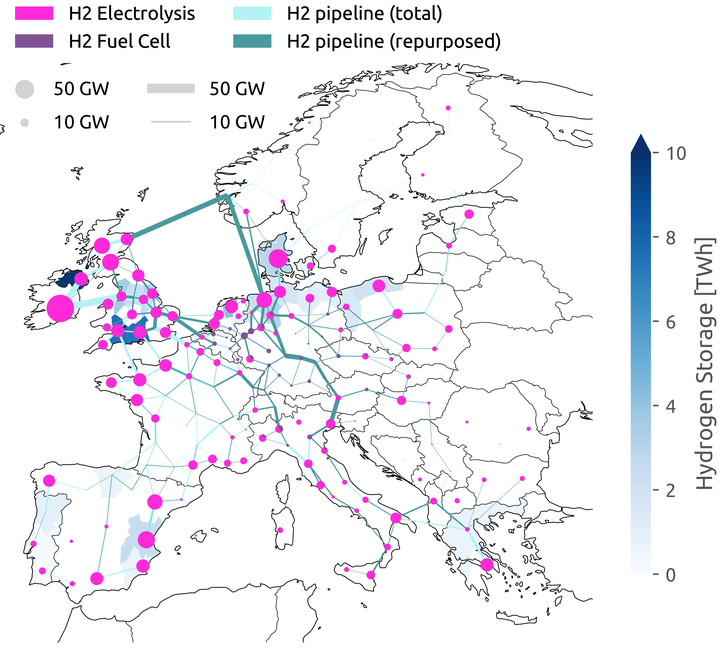Benefits of a Hydrogen Network in Europe

Electricity transmission expansion has suffered many delays in Europe in recent decades, despite its importance for integrating renewable electricity into the energy system. A hydrogen network which reuses the existing fossil gas network would not only help supply demand for low-emission fuels, but could also help to balance variations in wind and solar energy across the continent and thus avoid power grid expansion. We pursue this idea by varying the allowed expansion of electricity and hydrogen grids in net-zero CO2 scenarios for a sector-coupled European energy system with high shares of renewables and self-sufficient supply. We cover the electricity, buildings, transport, agriculture, and industry sectors across 181 regions and model every third hour of a year. With this high spatio-temporal resolution, we can capture bottlenecks in transmission and the variability of demand and renewable supply. Our results show a consistent benefit of a pan-continental hydrogen backbone that connects high-yield regions with demand centers, synthetic fuel production and geological storage sites. Developing a hydrogen network reduces system costs by up to 6%, with highest benefits when electricity grid reinforcements cannot be realised. Between 58% and 66% of this backbone could be built from repurposed natural gas pipelines. However, we find that hydrogen networks can only partially substitute for power grid expansion, and that both can achieve strongest cost savings of 12% together.